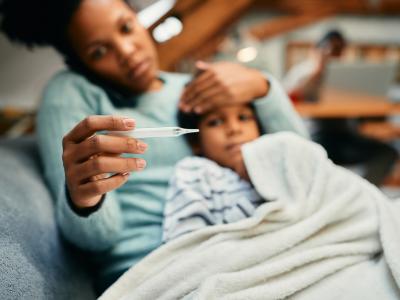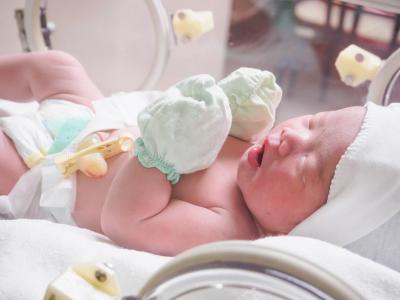May 4, 2012 (CIDRAP News) – In a lengthy letter, a National Institutes of Health (NIH) official has rejected recent charges that the agency planned a biased meeting agenda in an effort to induce the National Science Advisory Board for Biosecurity (NSABB) to act as it did in voting for full publication of two much-debated studies on H5N1 virus transmissibility.
Amy P. Patterson, MD, the NIH's associate director for science policy, wrote the letter to NSABB member Michael T. Osterholm, PhD, MPH, in response to his critique. Responding point by point, she said some of his assertions were based in part on misunderstandings and that he didn't comment on the draft agenda for the meeting when he had a chance. Also, she said Osterholm himself presented some of the views he argued were missing at the NSABB meeting.
Osterholm is director of the University of Minnesota's Center for Infectious Disease Research and Policy, publisher of CIDRAP News. When contacted today, he declined to comment on Patterson's letter.
Patterson's letter was dated Apr 25. A copy was posted online today by Nature, which this week published one of the two H5N1 studies, describing an H5N1-H1N1 hybrid virus that can spread among ferrets by respiratory droplets. The other study is expected to be published soon in Science.
An NIH official told CIDRAP News that the Patterson letter is now being provided to the media on request, since its general content was addressed at a hearing of the Senate Homeland Security and Governmental Affairs Committee on Apr 26, and the letter was subsequently provided to that committee.
Out of concern for possible misuse of the H5N1 findings, the NSABB recommended in December that key details be deleted from both studies before publication. After the authors revised the manuscripts to make clarifications and provide some additional data, the board reviewed them again on Mar 29 and 30 and decided to recommend publishing the full details.
The board voted unanimously for publication of the study by Yoshihiro Kawaoka, DVM, PhD, and colleagues, the paper published by Nature this week. But the vote to recommend publication of the other study, led by Ron Fouchier, PhD, was 12 to 6, with Osterholm among the dissenters.
Original versus revised
In her letter, Patterson asserted that Osterholm seemed to have misunderstood the purpose of the Mar 29-30 meeting, in that he said the board was asked to reconsider its earlier recommendation. She said the board's actual task was to consider the revised manuscripts, along with other data presented at the meeting, not the original versions.
As for the charge that the agenda was biased, Patterson wrote, "The agenda was not designed to produce any specific outcome other than a rigorous scientific discussion of the manuscripts and any dual use implications." Additional flu experts were invited "to inform the discussions" and provide epidemiologic information that was presented at a World Health Organization (WHO) meeting on the issues in February, she added.
Further, she said the draft agenda was sent to the NSABB members on Mar 21 for comments, adding, "NSABB staff and I have checked our email and did not find any feedback from you about the agenda."
Osterholm also had charged that the NIH's actions contributed to "kicking the can down the road" instead of facing the difficult policy issues raised by the H5N1 studies. In response to that, Patterson wrote, "I believe you are conflating the board's very specific tasking about the two manuscripts with the larger issue for which international discussion is needed."
She went on to list steps the government and the NSABB are taking to deal with "the larger issue of how to communicate DURC [dual-use research of concern] responsibly." These, she said, include continuing efforts "to develop a secure mechanism for disseminating sensitive scientific information to those with a legitimate need to know." That was part of the NSABB's original recommendation, but the ensuing discussions led to a conclusion that such a mechanism could not be developed quickly, if at all.
Another Osterholm criticism was that the meeting included no review by a "disinterested subject matter expert" on the state of reverse genetics techniques and whether they might permit those with limited expertise to replicate the H5N1 experiments.
To that point, Patterson replied that the NSABB itself is composed of subject matter experts who are chosen for their ability to offer impartial advice to the government. She said the NSABB had a lengthy discussion on whether the information in the manuscripts was "immediately and directly enabling" for would-be malefactors, and most of the members judged that it was not.
Missing experts
Osterholm also had complained that the voice of "an important group of senior influenza experts" was missing at the meeting, despite his attempts to get them invited. But Patterson said the NIH did not receive any suggestions from him about other experts to invite.
In one of his sharpest criticisms, Osterholm had said the security briefing given at the NSABB meeting was one of the most "incomplete" and "useless" such briefings he had ever heard.
Patterson said she wasn't allowed to comment on the details of the briefing, but asserted that those who gave the briefing represented multiple agencies and responded thoughtfully to questions. She added that many NSABB board members told her they found the briefing "thorough and helpful."
In some other responses, Patterson wrote that:
- Experts in "H5N1 virus surveillance and control" were represented at the meeting by a US Department of Agriculture official and the WHO's assistant director-general for health security and environment (Keiji Fukuda, MD, MPH, holds that position, though she didn't name him)
- Osterholm's point about the return of the H1N1 virus in 1977 after a 20-year absence was considered by the NSABB, because he presented the information at the meeting
- Removing details from scientific reports "carries with it the danger that the US could be perceived as withholding vital public health information from the regions of the world most at risk of an H5N1 outbreak"
See also:
Patterson letter posted by Nature
Apr 13 CIDRAP News story "NSABB members says officials stacked deck for board's H5N1 decision"





















